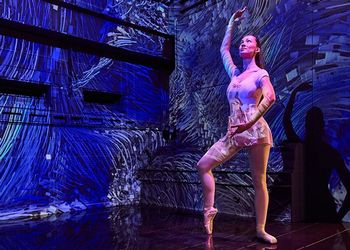All in the Family

His smile. That’s the first thing people notice about Pete Kakela. “I have plenty of reasons to smile,” Pete says. “I was only 17 when I arrived at Michigan State University in 1958. I had a wonderful undergraduate experience here. I played football under Duffy Daugherty. I was vice president of my senior class. And I gained a lifelong love of learning. But, gosh! Back then, I had no idea I’d return as a faculty member.”
Kakela will retire this year after a nearly 40-year teaching career in the College of Agriculture and Natural Resources, preceded by 10 years elsewhere. Looking back on his time at MSU, he says, “I couldn’t have written a better script. The people I’ve met. The experiences I’ve had. It’s too good to be true.”
Kakela grew up in Duluth, Minnesota, and had strong family ties to the University of Minnesota. His dad took a job in Toledo, Ohio, where Kakela was a standout on his high school football team. College recruiters came calling—Ohio State, Michigan State, plus Notre Dame, Northwestern, Iowa and Dartmouth-- where his brother played.
His campus visit to MSU, hosted by Everett John “Sonny” Grandelius (assistant football coach, a former Spartan great and NFL player) was all it took to land him. “I loved MSU. The space. The history. The campus had that feel,” Kakela recalls. However, back then freshman didn’t play varsity football; and there were no freshman games. “We scrimmaged against each other, day after day. It was brutal,” he says. By the end of spring practice he was elevated to the first-team freshmen squad. Soon he’d be playing in real games.
It was 1959. The Spartans were coming off a winless Big Ten season. Game one brought a loss at the hands of Texas A&M, but Pete got his first few minutes of playing time. The second game was at Michigan. “I remember coming out of the tunnel in Ann Arbor. I looked up, saw that big crowd, and thought: ‘this is something I’ll never forget.’” Michigan took an early lead, so Duffy beckoned eight sophomores. “We scored almost immediately and won the game, 34-8,” Kakela says. “I played first string defensive tackle for the rest of my MSU career.”
By his senior year the team was loaded with stars. The defense limited opponents to 10 total points over the first five games. The Spartans beat rivals Michigan, 28-0, and Notre Dame, 17-7, along the way. MSU was #1 in the polls before consecutive losses at Minnesota and Purdue marred an otherwise perfect campaign. The Spartans finished 7-2, ranked 8th nationally.
After playing in the College North-South All-Star game, Kakela had pro football offers, but chose to go to graduate school and to teach and conduct research.
Once he completed his degrees, he took teaching jobs elsewhere. But he jumped at a job opening at Michigan State in 1978. He’s been on the MSU faculty ever since, working at first with Professor Steinmueller. “I came home,” he says. “I matured here as a young person. I matured here as an academic.” Kakela studies iron ore. His career took off when Science, a prestigious academic journal, published an article of his. That sparked a long-term relationship with the iron ore industry. He’s recognized internationally for his expertise. And he’s authored more than 120 professional papers on such topics as energy, mining and other natural resources topics.
In 1976, he received a Rockefeller Fellowship for energy research. From 1981 to 1984, he was awarded a Kellogg National Fellowship for leadership development. In 1998, the Alfred P. Sloan Foundation selected him for a research fellowship, during which he analyzed productivity changes in the North American iron ore industry. In 2002, he received the MSU President’s Community Service Award for helping to strengthen Michigan’s automobile safety belt law.
Pete’s legacy is not limited to campus accomplishments. His first son, Andrew, died in a 1984 auto accident. The loss affected Pete deeply. It led to an extended period of reflection and soul-searching about life and its meaning. “Who could have imagined what would come next? I certainly didn’t,” Kakela says. Influenced by a friend who’d adopted a child from Russia, Pete and his spouse, Mary Addison--a family law attorney who now in adoptions--followed suit.
First, the couple adopted Nolan, an 11-month-old from Siberia. Within weeks, the remote orphanage called again, which brought eight-month-old Aiden into the fold. Next came nine-year-old Pasha. “We had four children at home at that point. The three additions joined our son John,” Kakela explains. And more children were on the way.
During a six week, period the Kakelas adopted Lilly (21/2 at the time), Jane (11/2) and premature newborn twins Alex and Ben, all of whom are siblings. A year later, baby sister, Elizabeth (aka Buffy) joined the clan and all were formally adopted in December 2004. By then, there were nine kids at home, making 11 children altogether, counting the late Andrew and his sister, Megan, from Pete’s previous marriage.
Presently, seven children are still living at home: a pair of high school juniors, a freshman, an eighth grader, the seventh-grade twins and a sixth grader. Life is a team sport at the couple’s eight bedroom, five bath home. A mix of school schedules, homework assignments, band lessons, track practice, doctor’s visits, daily chores, family dinners and summers at the family’s nearby cottage in Jackson overlap to create a quilt woven with parental love and affection.
Every day, the couple counts its blessings. “We’ve got such a good life,” Kakela says. What wishes does the couple have for their children? “We want them to be healthy and happy. And we want them to recognize that they need be contributors” to their communities, Addision adds. “The kids have great hearts, great spirits and they’re very giving. They’ve kept us young and they’ve kept us laughing.”



